Did you know that it’s unethical to mimic the call of a bird while trying to click it? Or that it’s not right to click bird nests? Did you know that offering bait to attract turtles to the surface of the water is a complete no-no for a wildlife photographer worth his salt?
A webinar on ethical wildlife photography was organised by the AE Block-based Ganga Prahris, West Bengal, which explained the dos and don’ts of the popular hobby. Ganga Prahris are a volunteer group set up by the Dehradun-based Wildlife Institute of India (WII) to protect the Ganges.
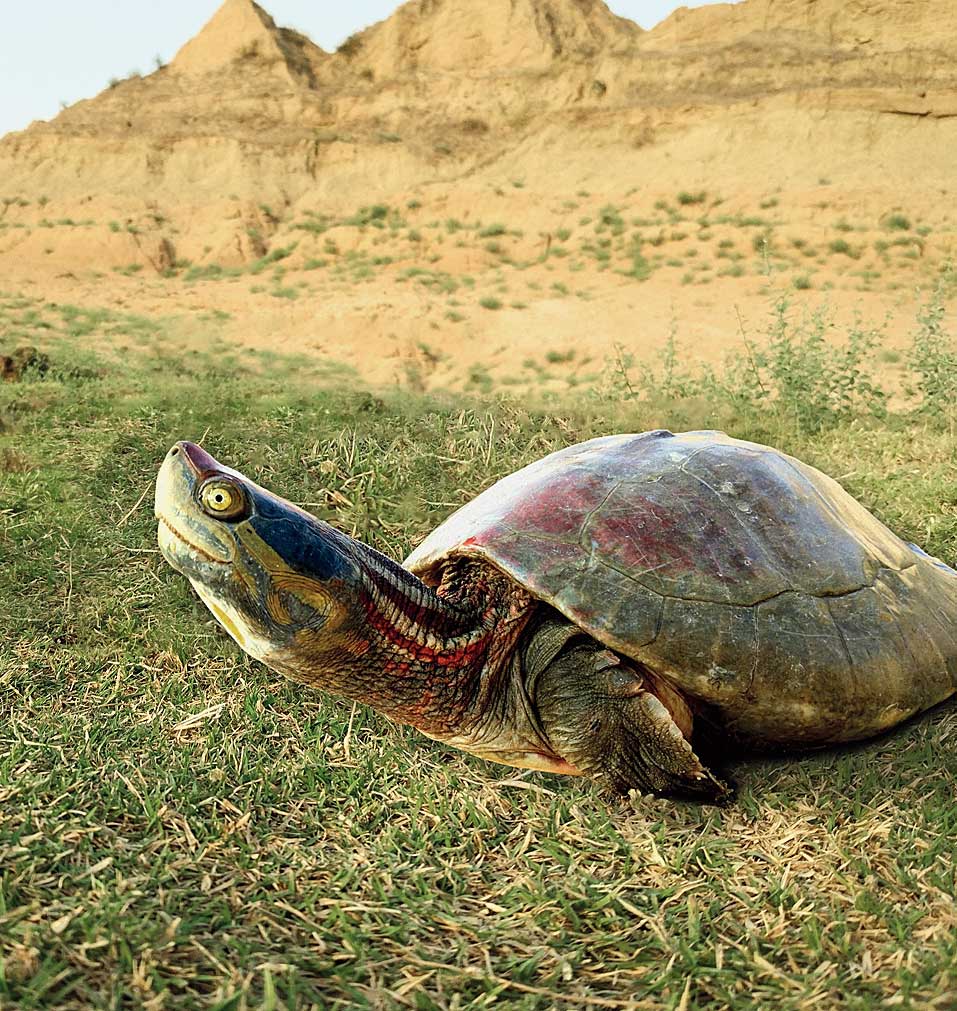
A red crowned roofed turtle. Picture courtesy Saurav Gawan
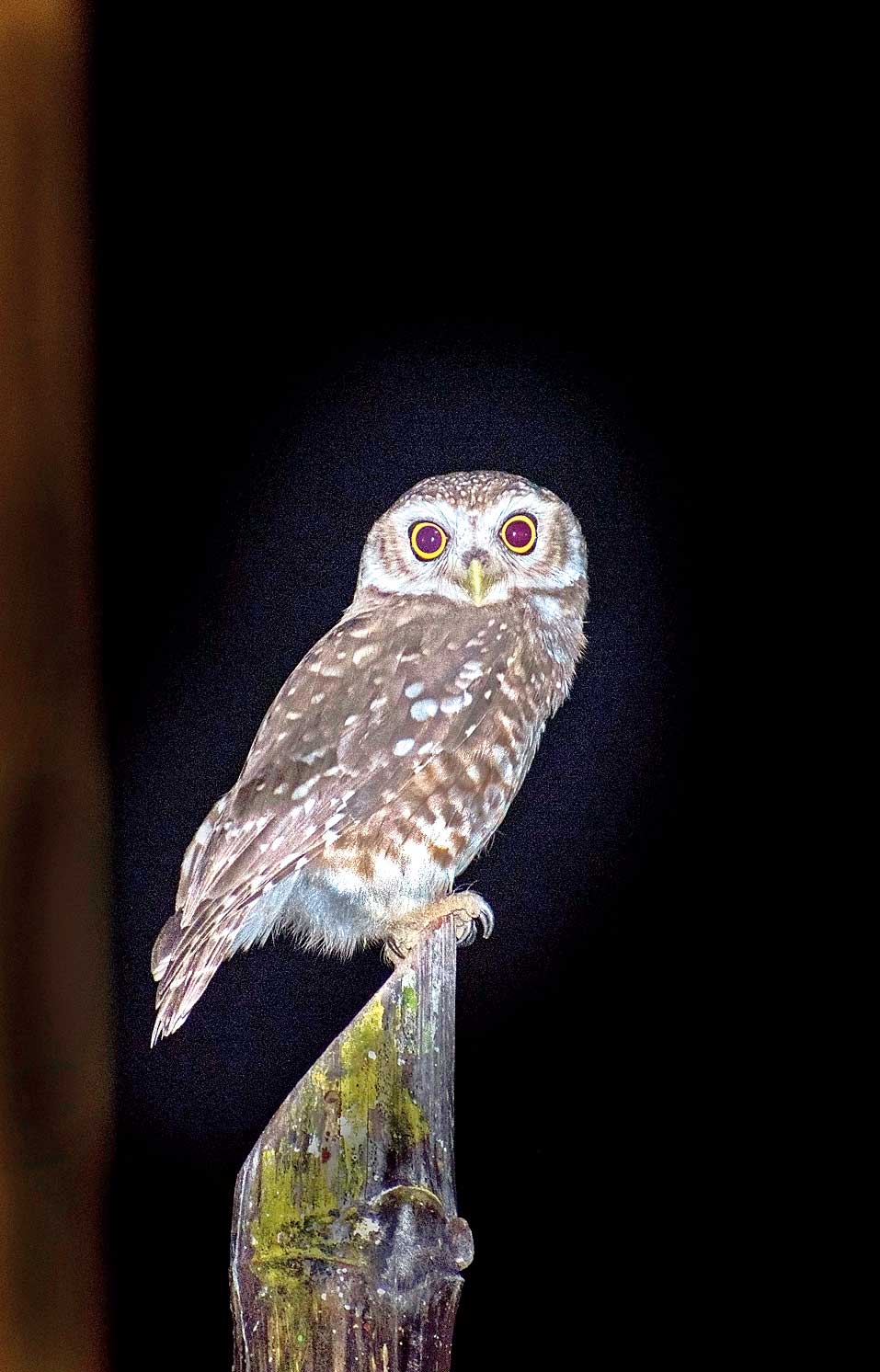
Spotted owlet. Pictures courtesy Mahisin Khan
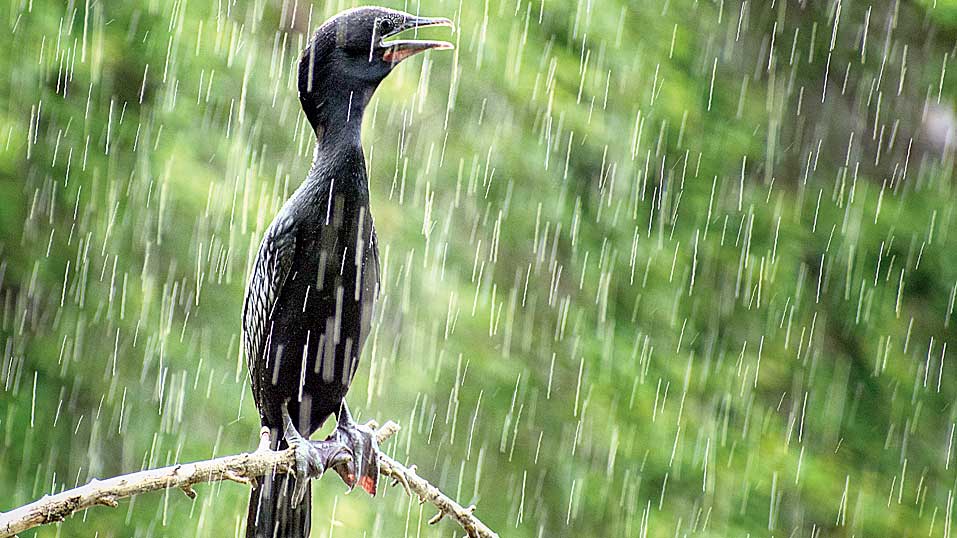
Little cormorant Pictures courtesy Mahisin Khan
Sharing the ethics was Saurav Gawan, conservation biologist at WII. “Photographers must remember that nature comes first, not them. You are entering the habitat of an animal and you must respect the rules of its home,” said Saurav. Here’s what all he shared -
Conservation- Your aim should be conservation, not winning photography contests. So click a frame that will tell the story of the animals’ depleting habitat or endangered status. For instance, Saurav shared the picture of nilgai he had clicked, being chased into the Ganga by farmers (picture on Page 4). It told the story of the animal-human conflict. “Since conservation is the goal, the most established of wildlife photographers allow you free access to their pictures if it is for educational purposes,” said Saurav.
Be invisible- Your photography must not interfere with the animals’ activities. If you’re heading to a national park, read the rules. Take a local guide. Leave nothing behind — no food or leftovers.
Treat rare and common species equally- For instance, Nubian flapshell turtles are rare and highly sought after by photographers. But if enthusiasts ignore the more common Indian flapshell turtles these may get endangered next. So click both and create awareness about both.
Wear colours that blend into the environment- Do not wear bright shades of red and orange, for instance. They make you visible from afar and may make the animal feel threatened. Gharials, for instance, are used to farmers working at a distance but if a photographer dressed in a bright red outfit approaches, the reptiles will feel threatened and withdraw into the water. Not only will you not get your snaps but the gharials, that need to bask, will also be deprived of the sun.
Avoid crowding- At times, large photography groups set out and upon a sighting, gherao the animal. This makes the creature uncomfortable. If it’s a carnivore it may even attack.
Do not mimic their calls- Photographers are known to hire guides who can mimic the call of birds. This is selfish and interferes with the birds’ natural life.
Do not use torch/flash/ shutter sound- Some animals are so soft-hearted that they can get heart attacks even from sound of your camera’s shutter.
There have been cases when deer have died simply hearing gunshots that were fired to scare away monkeys. Shut the shutter sound on your camera and shut your mobile phone when on field.
Do not chase animals- Since animals like turtles are harmless, photographers are known to pick them out of the water, wash them if they are muddy and place them in poses that will yield good shots. This breaks the cardinal rule of not interfering with the animals’ lives.
Do not use bait to draw animals- Photographers are known to lure turtles and birds this way to get close-ups but it isn’t ethical.
Safety first- Never handle reptiles and amphibians without the supervision of a herpetologist. This is for your own safety too. A lot of snakes, for instance, look similar and you don’t want to touch a venomous one.

The critically endangered red crowned roofed turtle with the commonly-sighted mugger crocodile in the backdrop. Picture courtesy Saurav Gawan
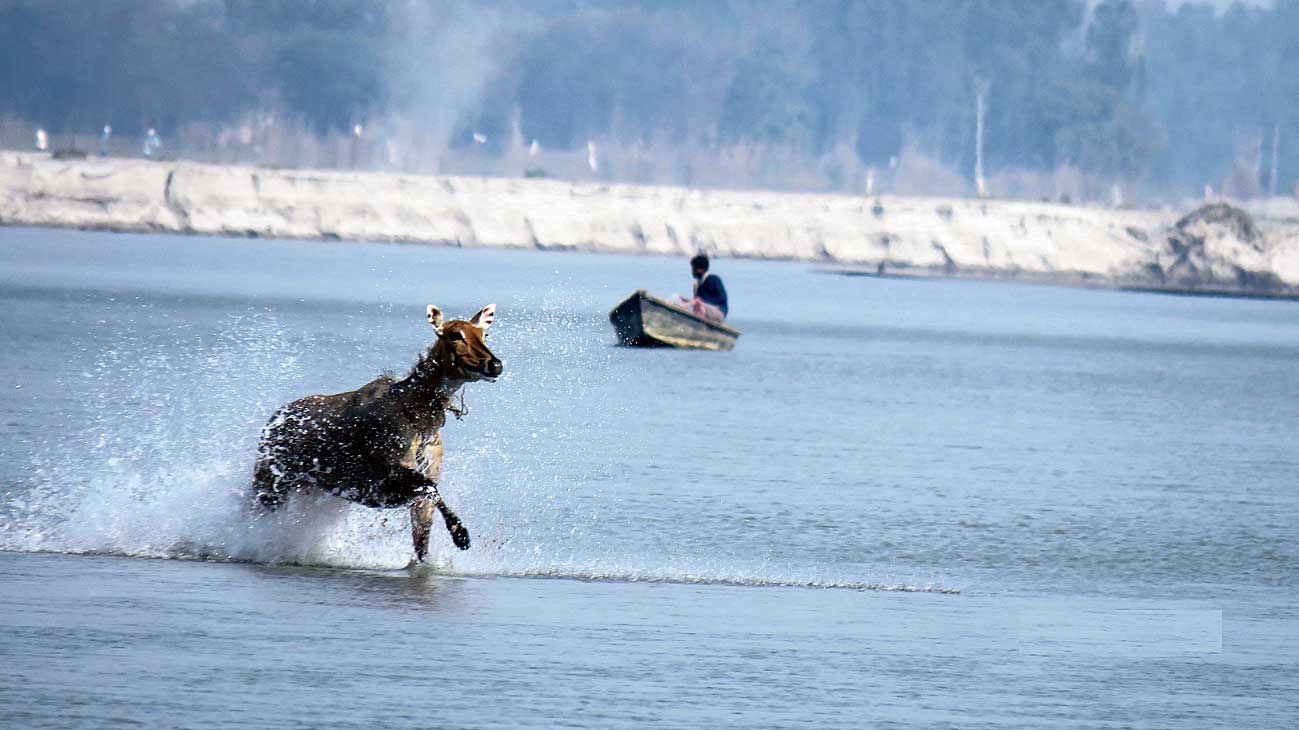
A nilgai runs across the Ganga after being chased by farmers, an instance of animal-human conflict. Picture courtesy Saurav Gawan
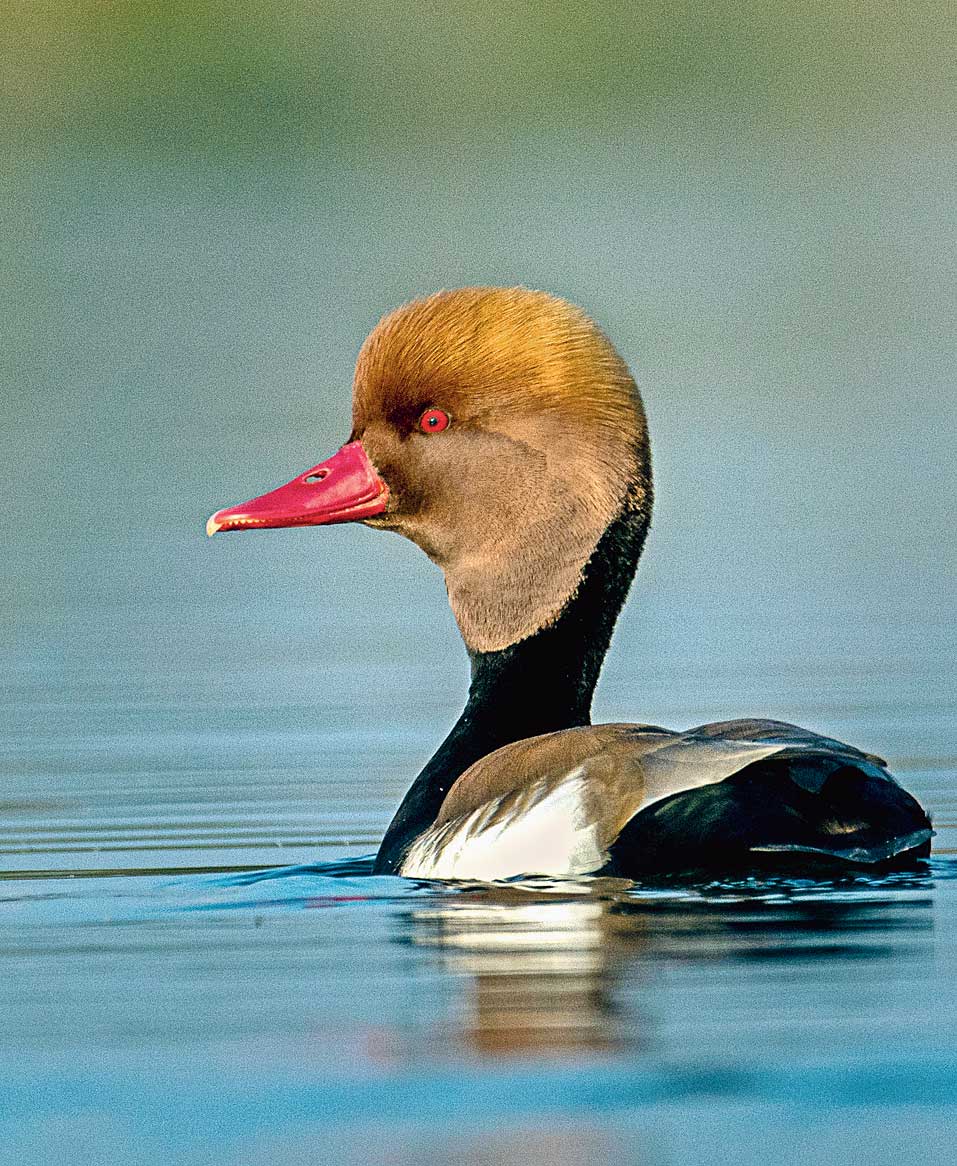
A red-crested pochard. Picture courtesy Mahisin Khan
Picture composition-
Mahisin Khan, a professional photographer, explained the technical aspect of photography - aperture, shutter speed, ISO and picture composition. “The following are commonly used types of compositions but always be ready to deviate,” he explained. “On the field you will have seconds to decide how to click but if you know the rules it will help you subconsciously. Sometimes composition can be altered during post-production too.”
1. Rule of third- Used most often. This is when you mentally draw two equidistant horizontal and vertical lines across the frame. Now, instead of placing the subject bang in the centre of the photo, place it at any corner of the inner-most box formed by the imaginary lines. The off-centre composition looks more natural. So popular is this method, that several cameras and mobile phone cameras show these grids on the screen these days.
2. Centered composition- Use this if, for instance, there are two V-shaped paths meeting at a point ahead.
3. Isolated subject- You may want to focus on your subject and blur out the rest. This will make it stand out in this environment.
4. Fill the frame- If, say, you see a tiger yawning, you could click a close-up of its face and show nothing else on screen.
5. Negative space- This is when instead of a tight portrait you allow breathing space. If the subject is looking at a far-away hill you could show the subject and some open space in the direction it is looking.
6. Left to right rule- Since we are used to reading from left to right, our minds are wired to search for the same grammar in a photograph too. You could tell a story in you frame where the climax is in the right corner.
7. Rule of space- This is when your picture follows your character to show his movement.
Mahisin also shared some tips for beginners-
1. Study the animal’s behaviour to determine its active season and active hours. For instance, birds are usually active in the morning.
2. Be patient- When Mahisin went to click finger-sized tree frogs in north Bengal, he found the creatures two days and a leach attack later. “Be ready to stalk the animal — without disturbing or intimating him to get the best shots. Unlike in the case of people, you can’t ask animals for a retake. The moment will not return. You need to be ready and patient for the right time,” he said.
3. Golden hour- The quality of your pictures depends greatly on ambient light so try to shoot two hours after sunrise and two hours before sunset. Known as “golden hour”, this is the best time for photography.
4. Beginners can try to focus on the eye of the subject and try to click from its eye level. They can also try to click the animal along with its habitat.
Since wildlife photography is an expensive hobby, Mahisin suggested that beginners start by clicking birds nearby. “But be responsible about it. For instance, it is unethical for amateurs to click nests. Once a photographer shares these pictures it prompts hundreds more to do the same. Inadvertently, they end up harming the chicks in the nest,” said Mahisin.
And Sourav answered a question on many a mind in the audience. “Viewers are asking for tips on mobile phone photography but my advice is to simply not use it for wildlife,” he said. “This is because phones don’t allow that much zoom and as we have understood, it is not advisable to go too close to animals to shoot.”










